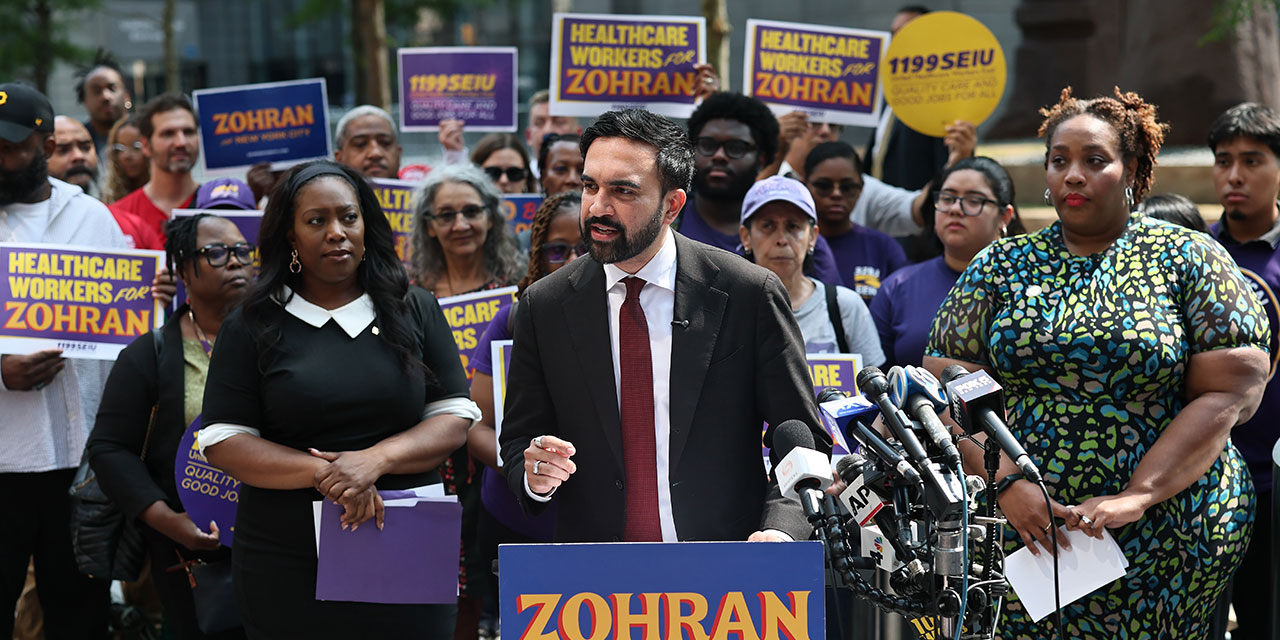
One of Zohran Mamdani’s signature campaign promises is to raise New York City’s hourly minimum wage from $16.50 to $30. While the socialist’s “$30 by ’30” proposal sounds like a windfall for lower-income New Yorkers, economic data suggest that it would limit employment opportunities for poor and working-class residents.
As of 2020, the median hourly wage of workers who live and work in New York City was around $29. Raising the minimum wage to $30, nearly double today’s rate, would impose a wage floor higher than half of working New Yorkers’ hourly earnings.
Finally, a reason to check your email.
Sign up for our free newsletter today.
That would push many lower income residents out of the job market entirely. Economists often use the Kaitz index—the ratio of a country or region’s minimum wage to its median wage––to measure the minimum wage’s effect on employment. A lower Kaitz index suggests that the minimum wage is pricing relatively few workers out of the market; a higher Kaitz index suggests the opposite. Historically, the Kaitz index hovered between 0.48 and 0.55 at the federal level.
Even progressive economists who advocate for higher minimum wages caution against an excessively high Kaitz index. Arindrajit Dube, a progressive labor economist, for example, has written that a 0.8 Kaitz index reflected a “highly interventionist” policy that would “dramatically compress[] difference in wages for nearly half the workforce.” If Mamdani’s proposal were implemented, it would result in an even higher index—around 1.1.
In practice, that means that Mamdani’s minimum wage hike would drive up the wages of millions of Gotham’s workers. For context, a state legislative initiative to raise New York State’s minimum wage to $21.25 by 2026 would have “directly affect[ed]” some 1.1 million New Yorkers’ wages. Pushing the wage floor to $30 would affect an even larger share —close to half of New York City workers, according to my calculations, using data from the American Community Survey.
Research on the minimum wage’s effects suggest that Mamdani’s minimum-wage hike could disrupt the city’s labor market. A study of state minimum-wage changes between 1979 through 2016 found no evidence of job losses associated with wage-floor increases—provided that the new minimum wage remained below about 55 percent of the state’s median wage. Mamdani’s $30 proposal, however, would exceed the state’s current median wage.
Other cities have found that raising their minimum wage closer to the median, as Mamdani desires, results in a net earnings loss for workers. In 2014, for example, Seattle began raising its wage floor in steps toward $15. A University of Washington study found that, when the minimum wage hit $13 (about half the city’s then-median wage) in 2016, low-wage workers saw a 3.4 percent pay increase but a 7 percent drop in hours worked, resulting in a slight net earnings loss, on average.
While Mamdani presents his wished-for minimum wage hike as a boon to New York’s working poor, it would hurt those in low-wage industries, low-skill occupations, and poorer boroughs the most.
First, imposing such a dramatic increase could devastate Gotham’s small businesses. A jump to $30, even phased in over four years, could imperil many small firms—particularly those in retail and food service, which operate on thin margins. A Harvard Business School analysis found that a $1 rise in the minimum wage increased a median-ranked restaurant’s risk of closure by 14 percent.
In outer borough communities, a relatively large share of residents work in modest-paying service jobs. If small businesses in those areas cut back or close, these communities stand to lose the most. Ironically, a policy meant to help low-income areas could disproportionately erode jobs in those very neighborhoods, widening economic disparities across the city.
Raising the minimum wage far above the current median worker’s wages will increase unemployment and therefore raise the number of people who work under the table. Such an underground economy already exists in New York, but Mamdani’s policy could expand it dramatically.
Mamdani, however, may be willing to tolerate the decline in small-business employment, given that it will benefit unionized workers and big businesses. Unionized companies typically have higher labor costs due to collectively bargained wages and benefits. If all employers have to pay a high baseline, small businesses and non-union jobs will become less competitive.
In the end, Mamdani’s minimum-wage proposal would be a boon to organized labor—but would hurt the low-income New Yorkers his campaign pledges to help.
Photo by Michael M. Santiago/Getty Images
City Journal is a publication of the Manhattan Institute for Policy Research (MI), a leading free-market think tank. Are you interested in supporting the magazine? As a 501(c)(3) nonprofit, donations in support of MI and City Journal are fully tax-deductible as provided by law (EIN #13-2912529).
Source link
















